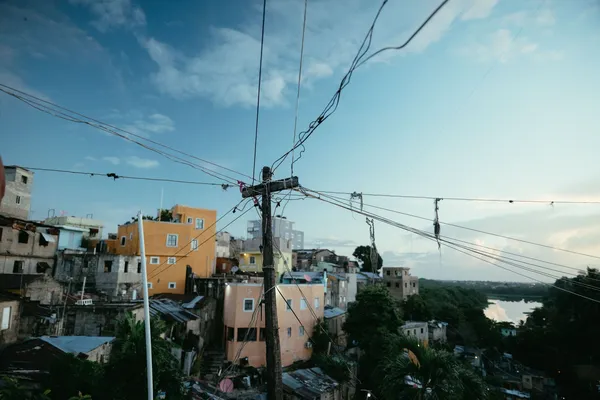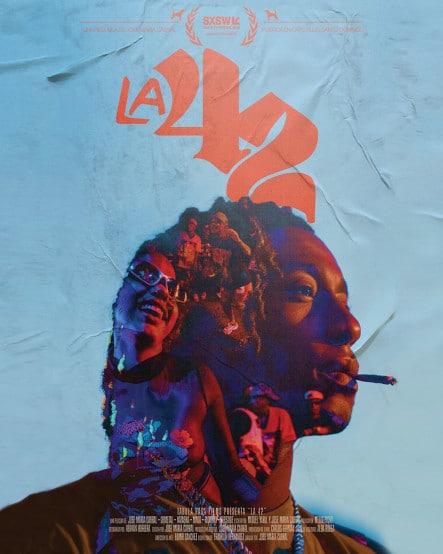Eye For Film >> Movies >> 42nd Street (2025) Film Review
42nd Street
Reviewed by: Jennie Kermode

They crop up all around the world, the special places where everybody wants to claim they lived, after the fact. London’s Soho, New York City’s Lower East Side, Friedrichshain in Berlin – places where people like that were afraid to be when it was really happening. There’s a familiar cycle that sees artists, writers and musicians moving into the only places they can afford; coping with the drugs and the violence; producing, in their concentration, something remarkable; and then being forced out again by rising rents as wealthy wannabes arrive to try to siphon off their cool. Screened as part of 2025’s South by Southwest, José María Cabral’s 42nd Street captures this cycle at an earlier stage than usual, as it happens to a once-shunned district in the heart of the Dominican Republic – a place where new sounds and new language are being born.
This is La 42, described as “600m of streets where anything can happen.” We see street performers with home made instruments, singing and dancing, perhaps for money, perhaps just for the pleasure of it. They are part of the teteo, we are told – the rave that never stops. This where techno fused with Latin beats in fresh, organic music which belongs wholly to Dominica, giving it a new sense of pride, no longer a cultural backwater but a place with a voice of its own. The home of musicians like Akon and Bad Bunny; the origin point of the face-contort dance and the dembow songs, where people are trucho but rulay (there are perhaps more new words here for states of chemically altered consciousness than for anything else). As motorbikes weave in an out of the crowd, so does the camera. When it rests, there is conversation, and the effect is like encountering a series of interesting strangers at a party.
Like its subject, the film is a fusion of styles, framed by an unseen narrator who declares, minutes in, “Drug control agents murdered me in my own home while I was asleep.” Floral tributes are laid, candles lit. A blend of shaggy dog story and documentary, the film goes on to introduce friends, connecting them to place in a way that binds the identities of the narrator and the streets themselves. When we meet the police, however, they are not treated simply as enemies: they're people who just don’t get it. One of them tries to explain her frustrations. “This neighbourhood needs peace and quiet,” she says despairingly. It’s evident that she’s trying to keep order in an unmanageable situation; the violence that develops stems in part from her being under-resourced. Without passing judgement directly, the film points up the absurdity of trying to clamp down on drug use when it’s everywhere, not just here, and when it’s an intrinsic part of a cultural phenomenon which the government is also beginning to see as a marketing opportunity.
Cabral doesn’t try to sanitise what we see, though he avoids being gratuitous. We hear the noise and see feathers flying, but don’t look on directly during a cock fight. We hear talk about gambling and the desperation that drives it, see people playing on ancient fruit machines. There is talk about sex work, too, and the hierarchies within it. We see something of the rivalries between scene hangers-on, but mostly the focus is on the creators, showing us work at all stages of development, giving it a chance to breathe before it disappears from history or gets defined by other people. The narrator introduces Demetal, his best friend, “one of the leaders of “the movement,” whose film, Los Zombies Truchos, we get to see a part of over the closing credits.
Throughout, there is the music, sometimes melodic, sometimes punchy and aggressive, even slipping out of key. It blends with the ambient noise and a certain quality of light to capture the spirit of the place. Using multi-part split screens, Cabral pulls together disparate parts to make a whole, to make it feel like something seen from within. When the time comes for the myth of 42nd Street to be born, the district will have at least this film through which to speak for itself.
Reviewed on: 13 Apr 2025
















